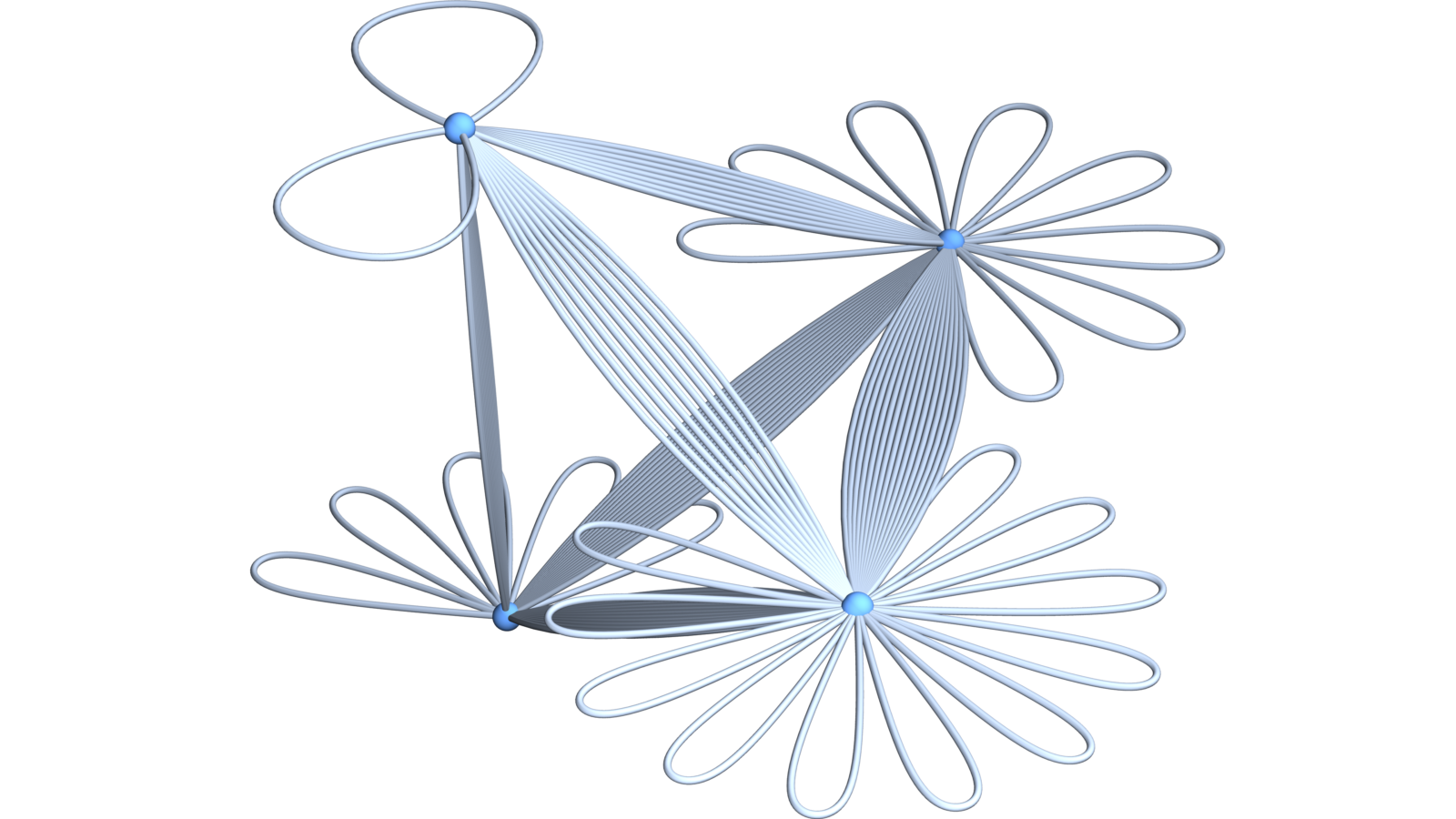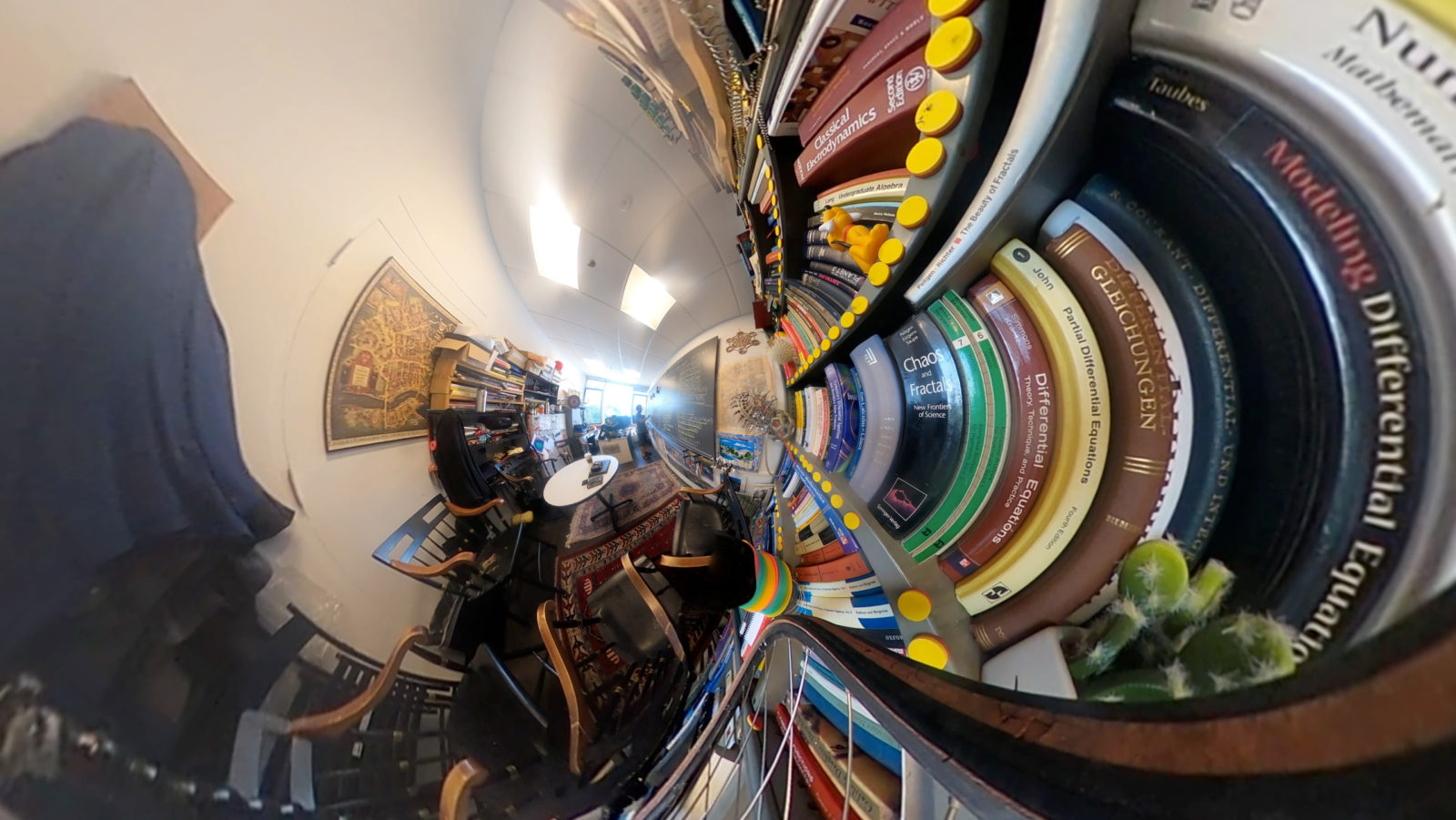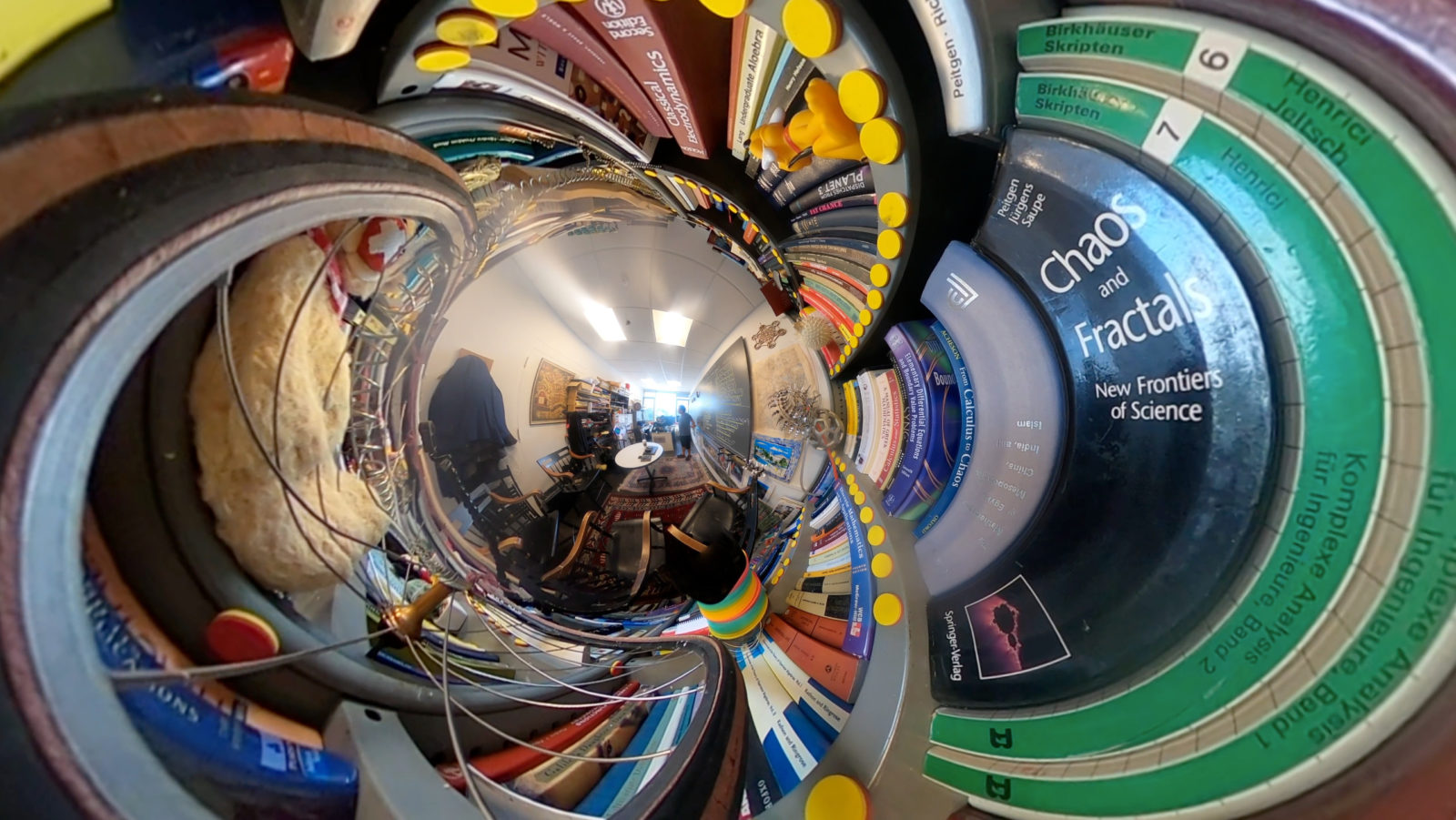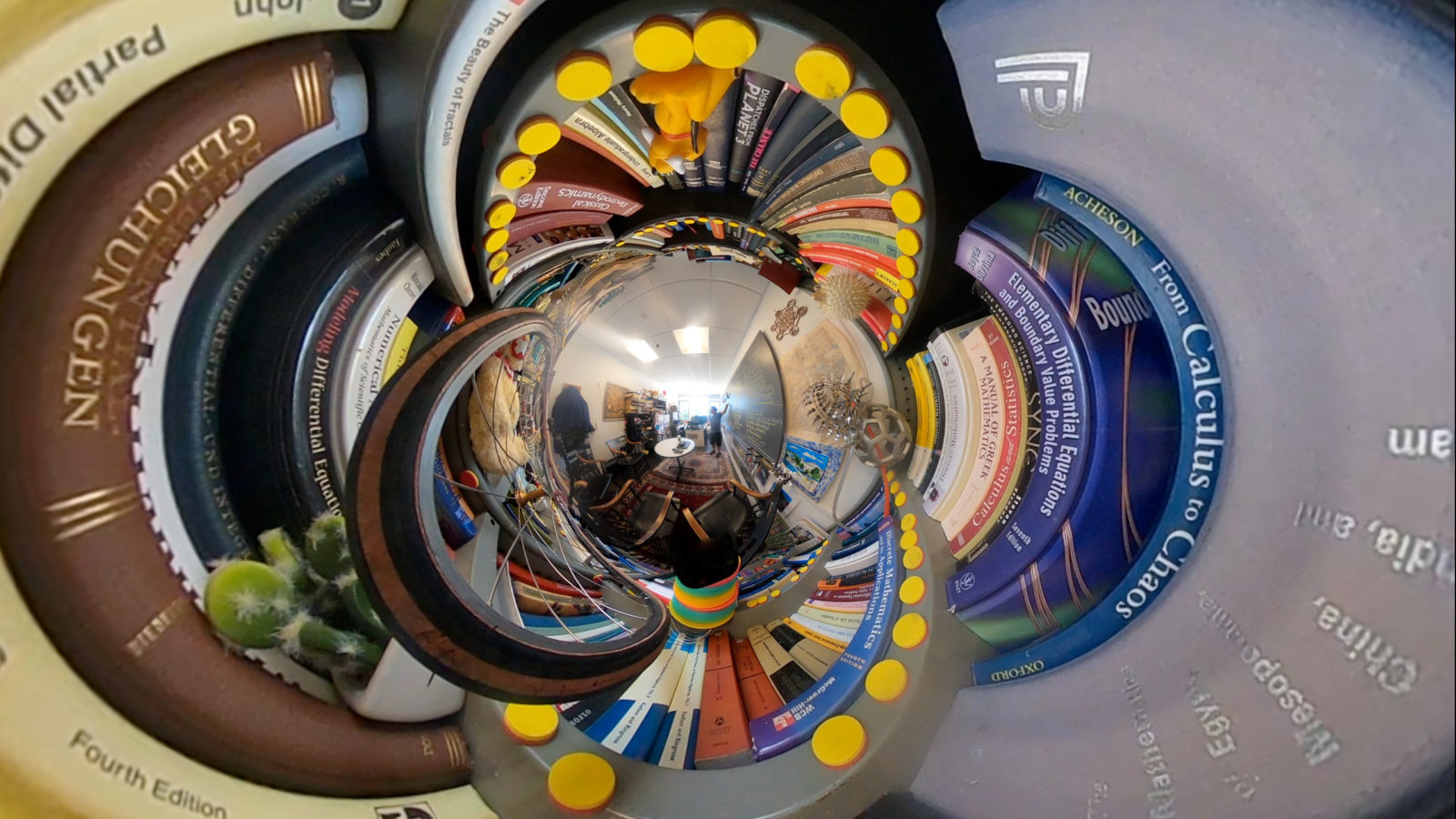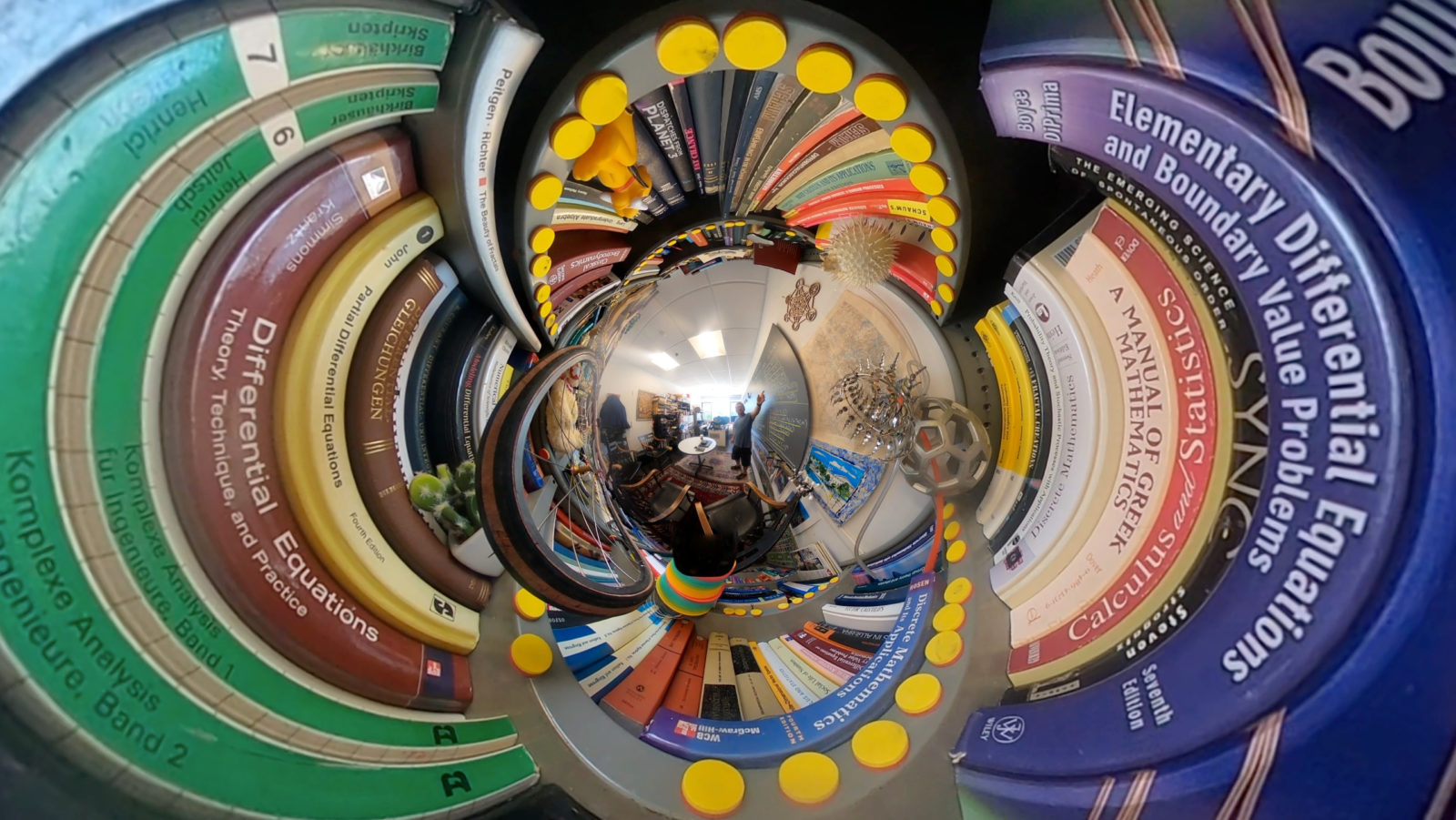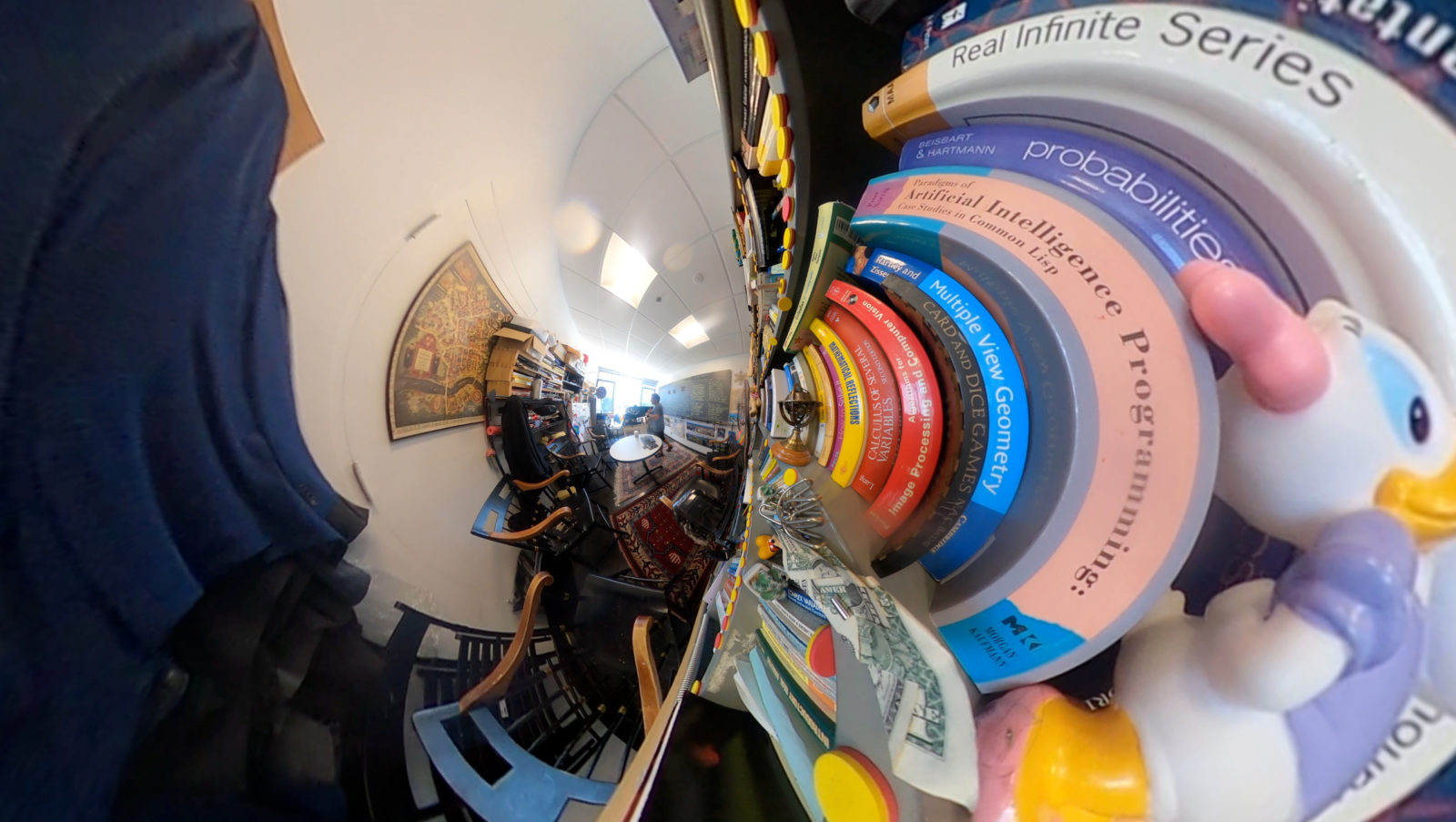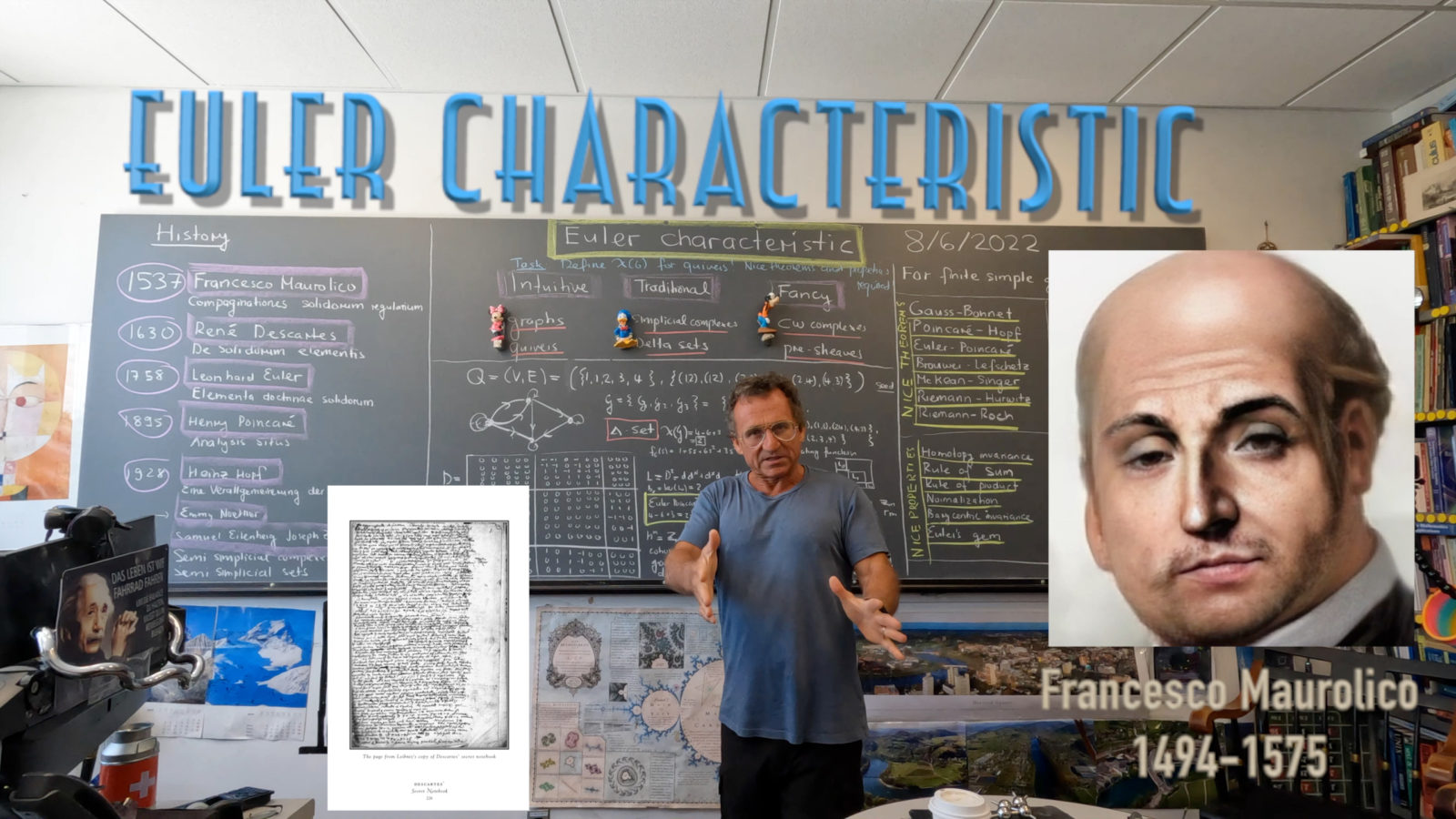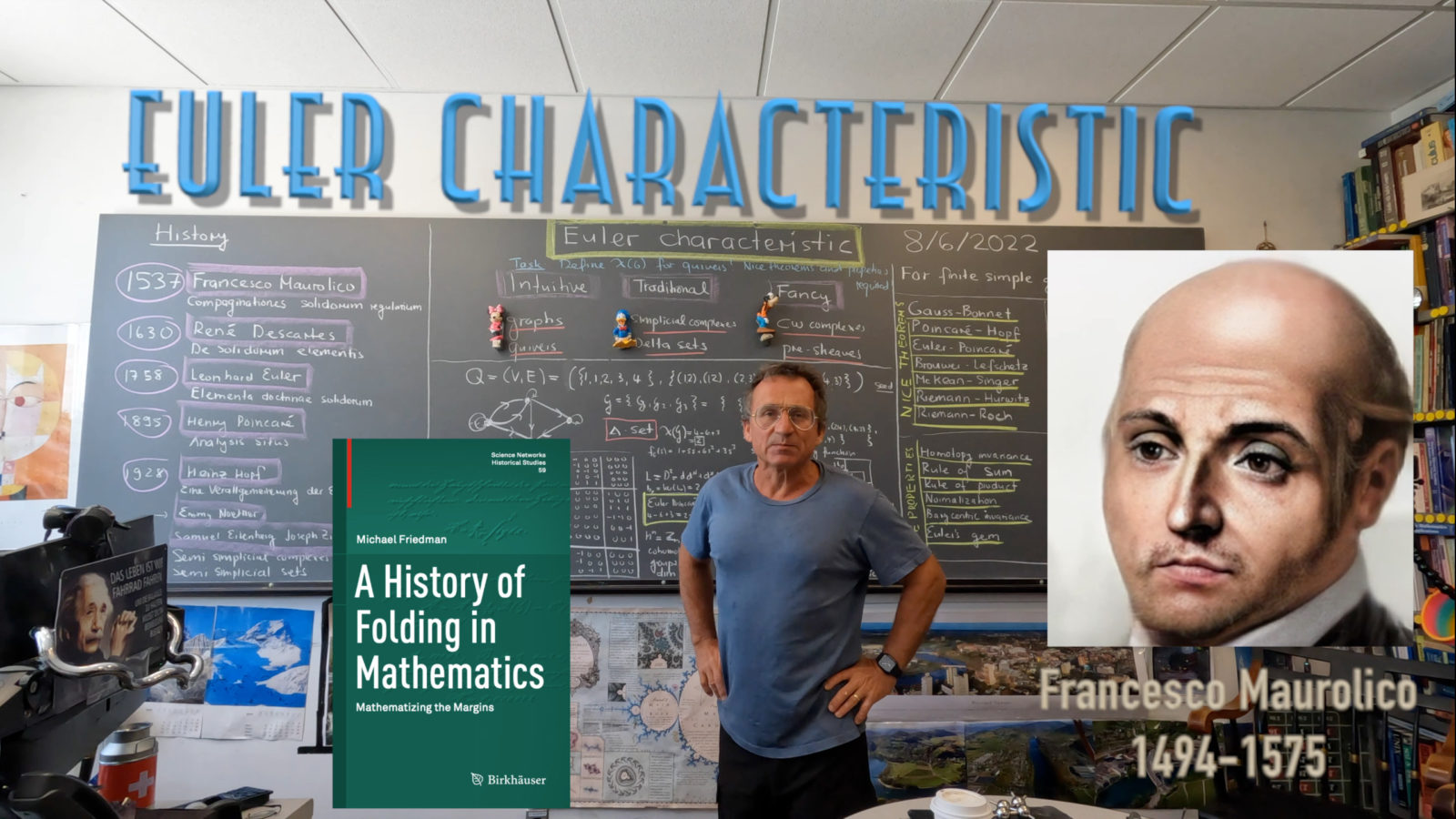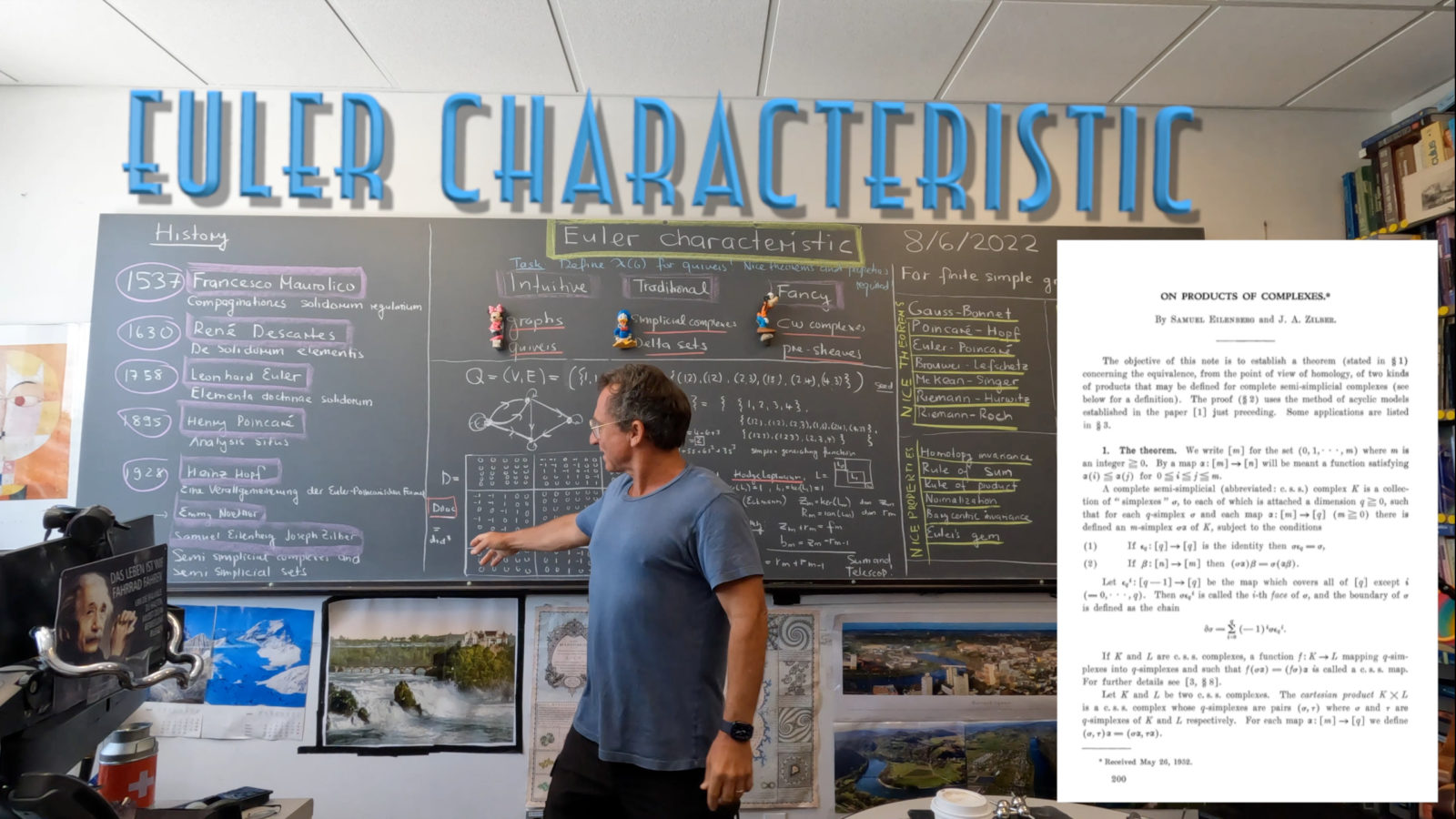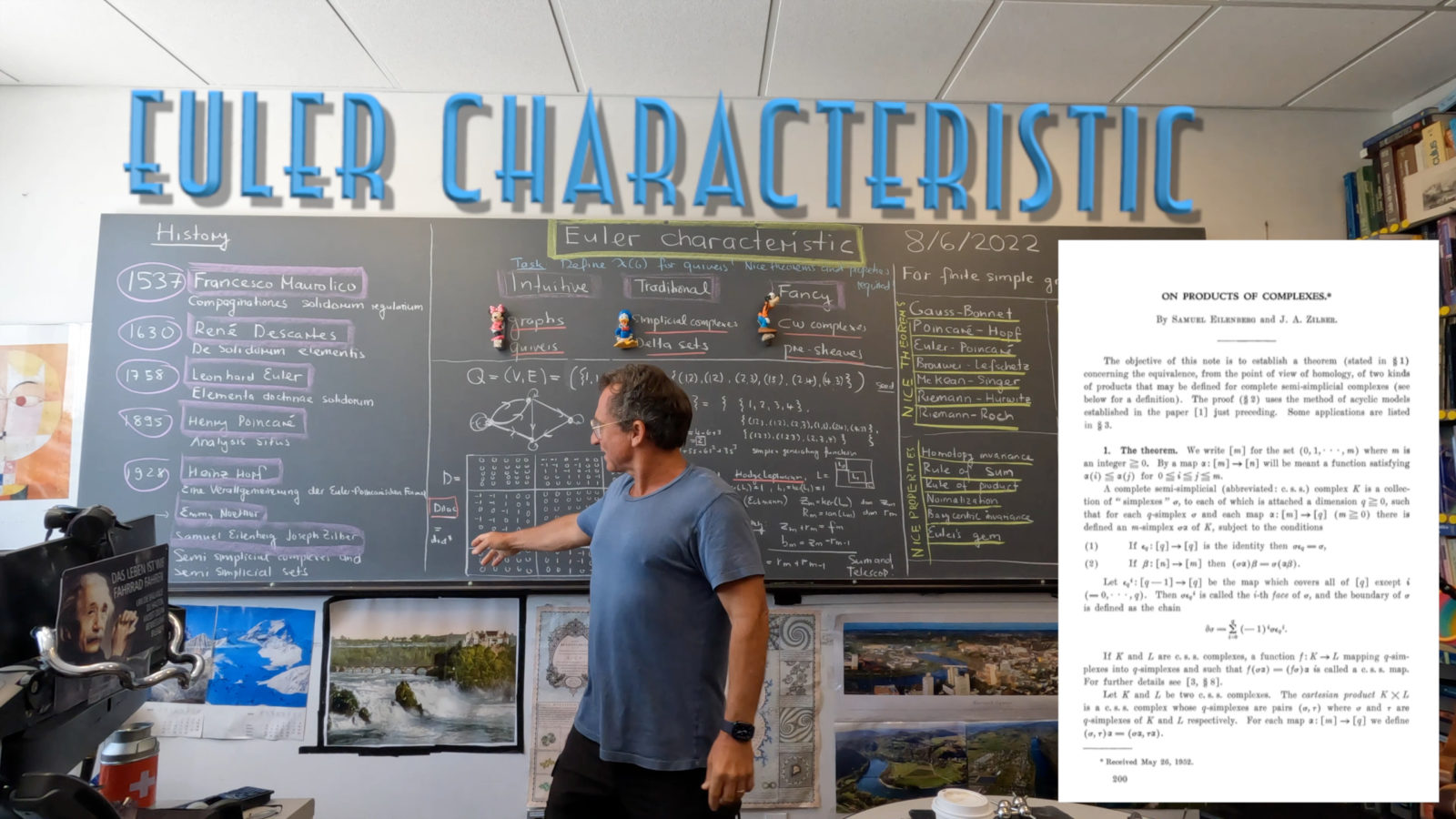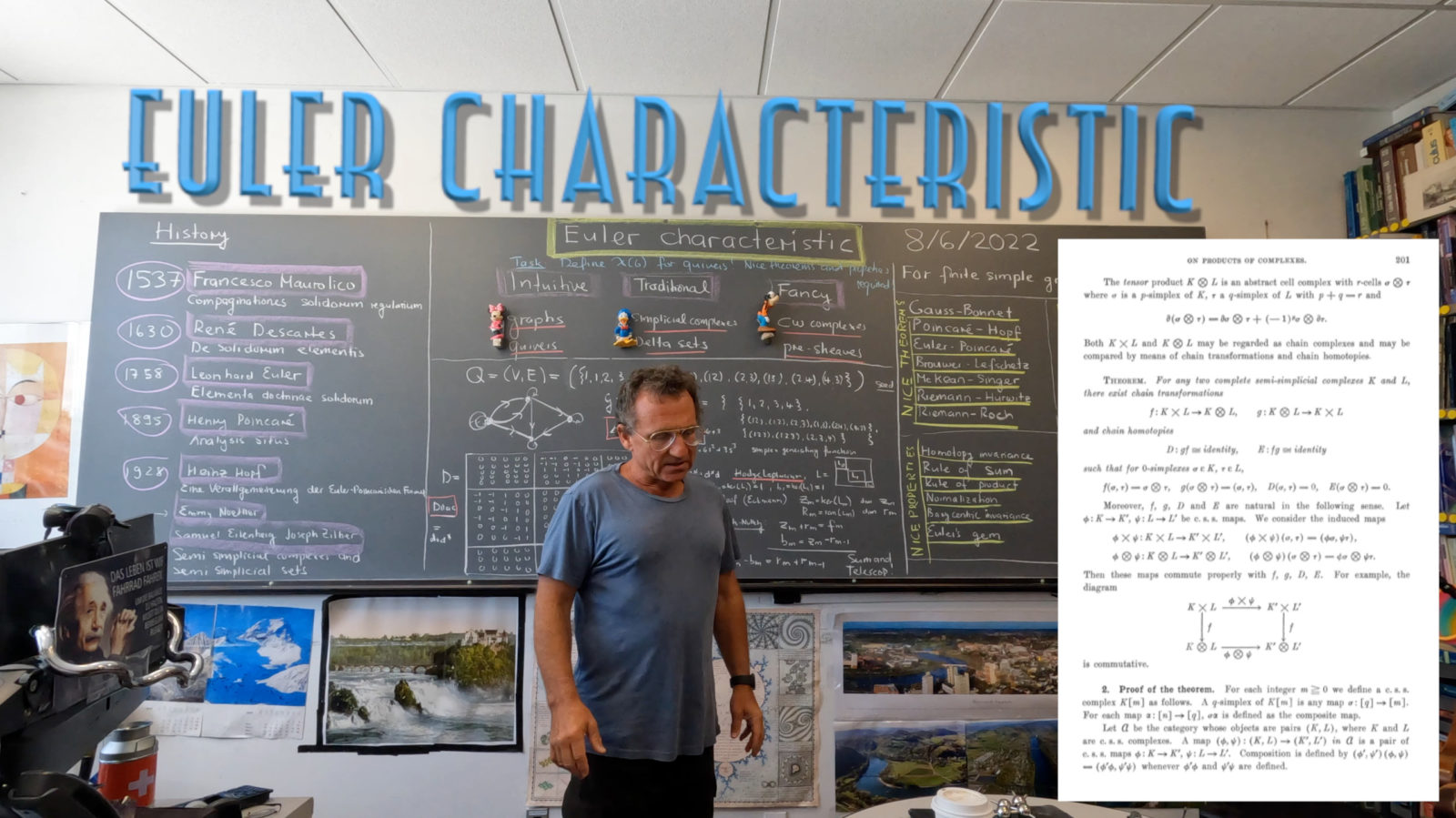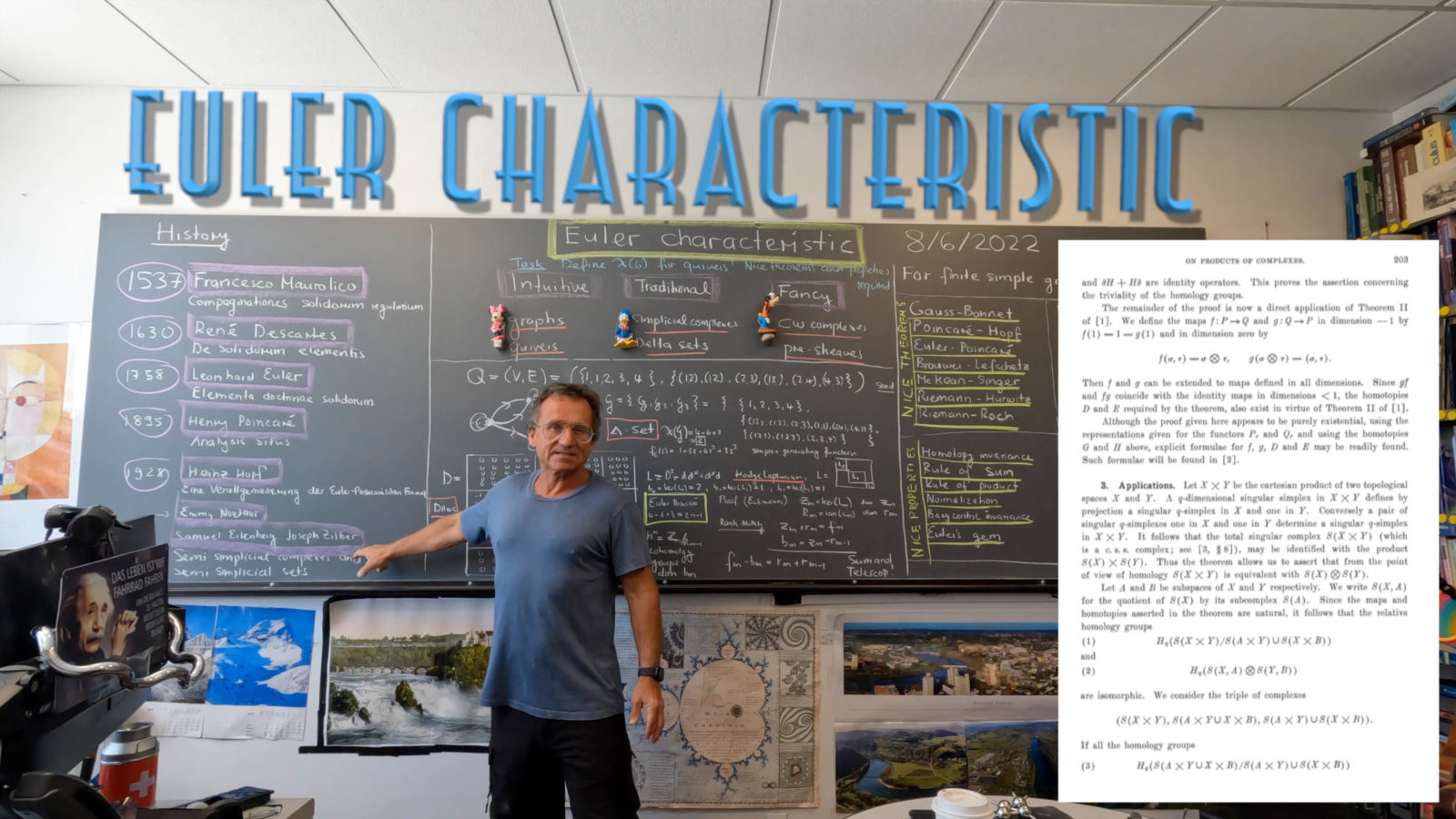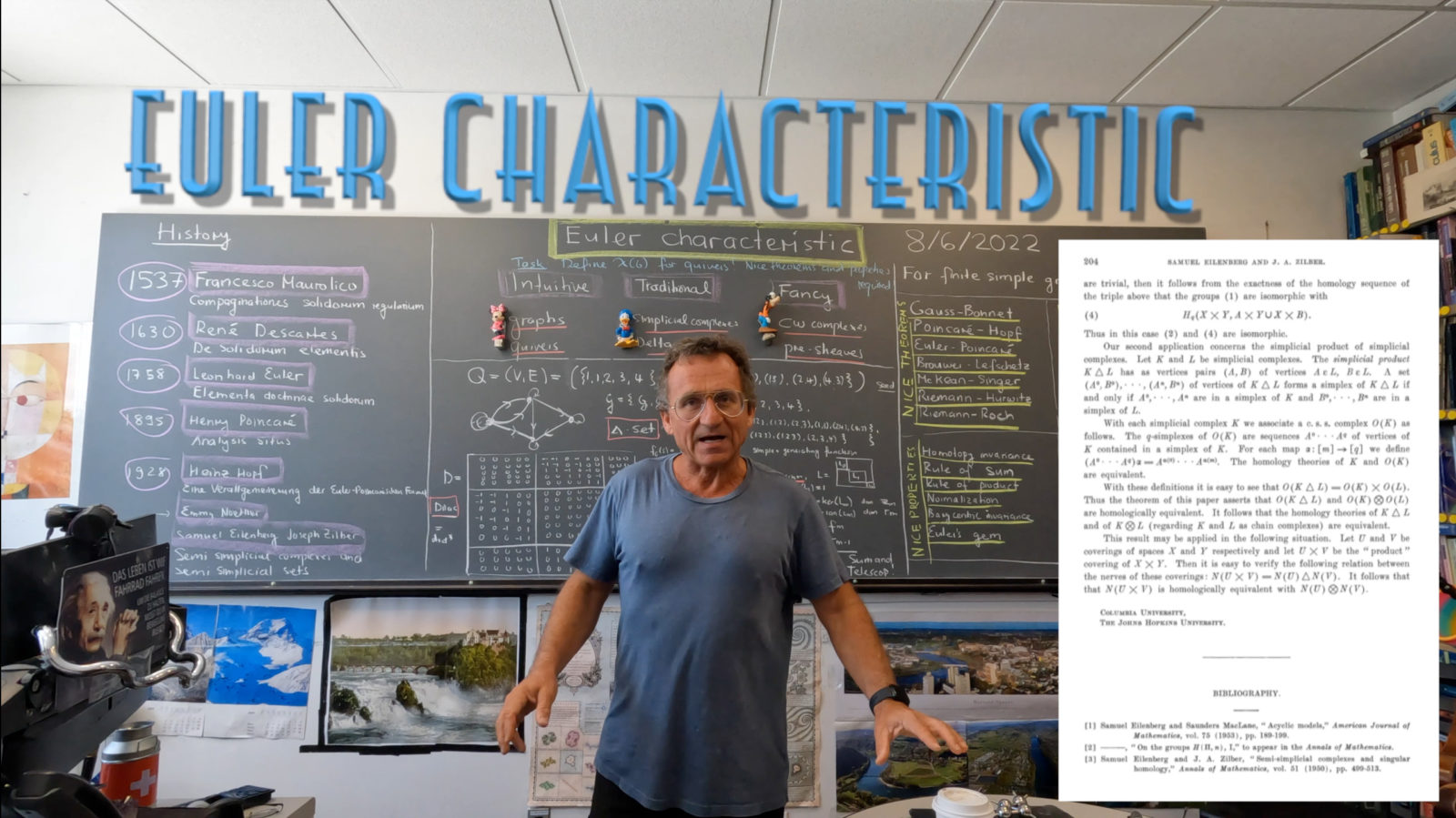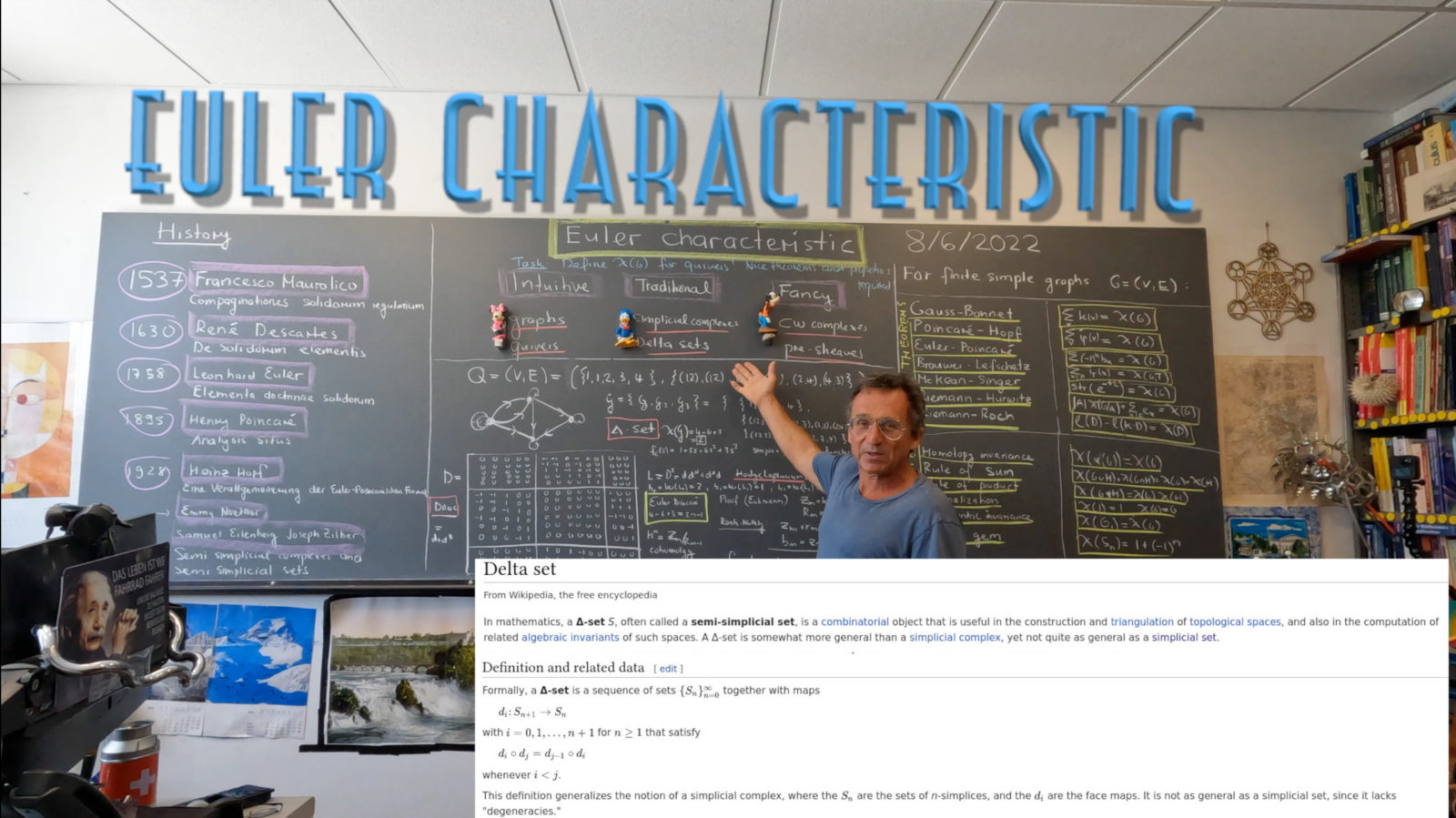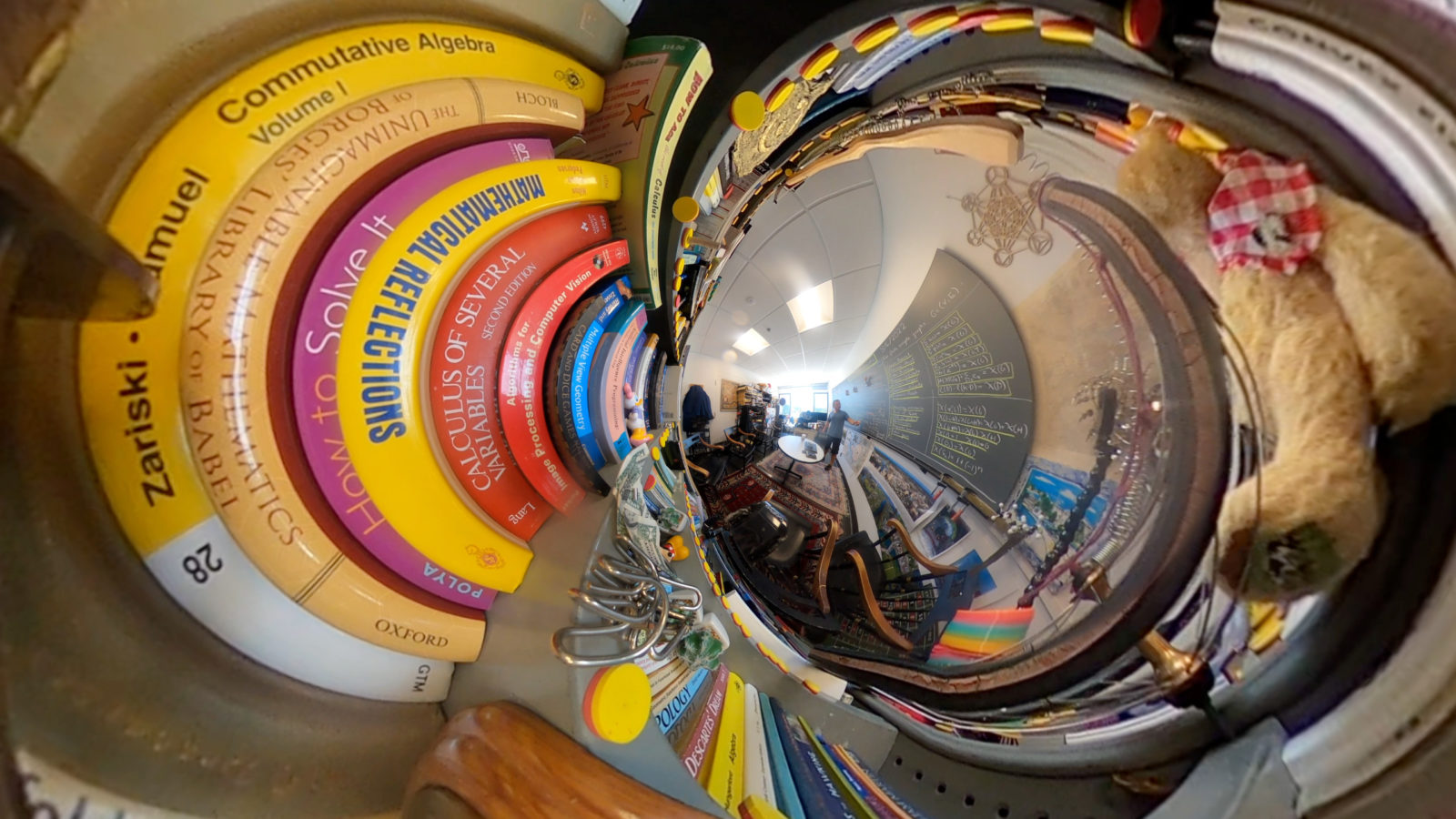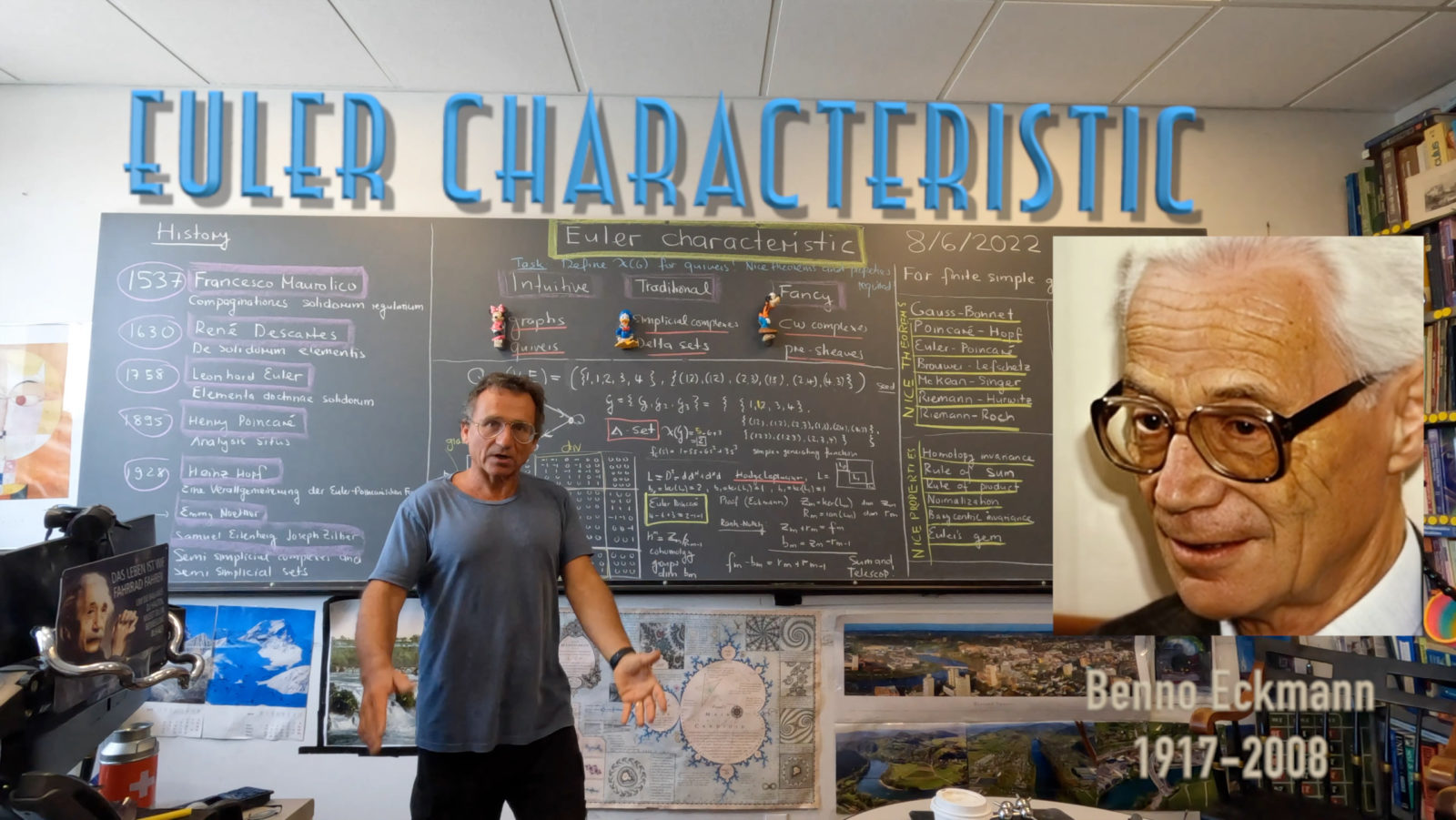While working more on the spectral paper [PDF] (the latest version of August 10 is now uploaded again also on ArXiv and will appear there in the next day), the question came up how to define Euler characteristic for quivers G=(V,E). Now, many graph theorists would of course say meaning to interpret the graph as a one dimensional “curve”. [My standard rant: It is in my opinion one of the tragedies of the second half of the 20th century to degrade graphs to one-dimensional simplicial complexes and to use much less intutive notions to combinatorially describe compact topological spaces like compact differentiable manifolds which perfectly well can be understood in a finitist manner. I take the point of view that non-compact objects have to be understood by looking at some compactification and then use the radically elementary point of view of Nelson (a flavor of non-standard analysis) which allows to treat compact objects as finite objects. So there is no real need for the infinity axiom. Complicated topological spaces also, like Cantor sets can be perfectly understood as some sort of pro-finite limit of finite objects. ] So, how to deal with quivers if on wants them to see in a less derogatory manner. In the finite simple graph case, the most natural approach (which I always assumed since working on this subject since 2008) is to look at the simplicial complex of the complete subgraphs. But this of course does not work any more for quivers. Take the following graph given in Mathematica by Graph[Table[RandomChoice[Range[4]] -> RandomChoice[Range[4]], {100}]]. What is its Euler characteristic? We have to count triangles and tetrahedra. It turns out that if we look at the loops as edges we have difficulty to get compatibility of Euler characteristic with multiplication (even defining a reasonable multiplication with edges as loops produces a mess). Also Riemann-Roch considerations (and the Schroedinger picture talked about in last two weeks) make it reasonable to look at loops as excitements of vertices and count them as vertices. Riemann Roch considers the degree of a divisor plus the Euler characteristic as the total Euler characteristic or a geometric object equipped with a divisor. [ For me, a divisor is a geometric object, similarly as a section of a fiber bundle can be seen as a geometric object].
